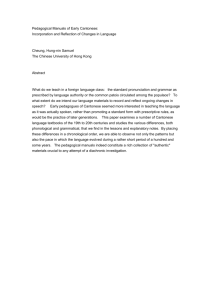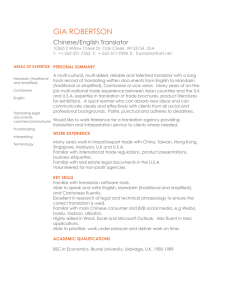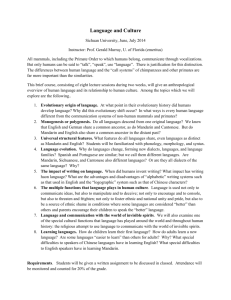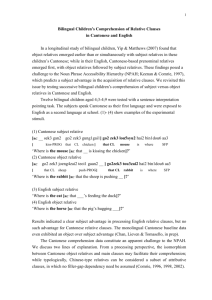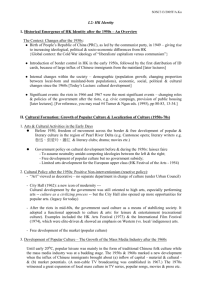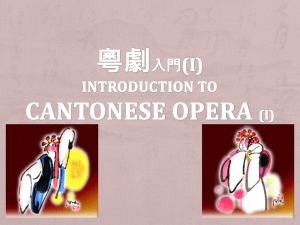The Journal of East Asian Language Educators
advertisement
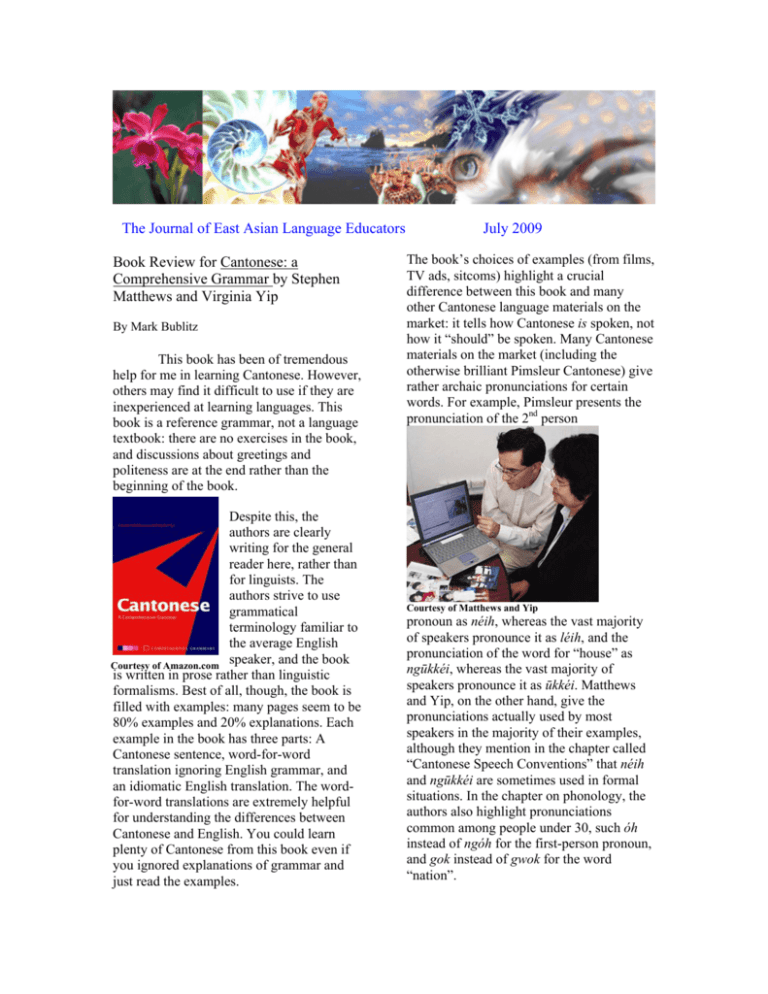
The Journal of East Asian Language Educators Book Review for Cantonese: a Comprehensive Grammar by Stephen Matthews and Virginia Yip By Mark Bublitz This book has been of tremendous help for me in learning Cantonese. However, others may find it difficult to use if they are inexperienced at learning languages. This book is a reference grammar, not a language textbook: there are no exercises in the book, and discussions about greetings and politeness are at the end rather than the beginning of the book. Despite this, the authors are clearly writing for the general reader here, rather than for linguists. The authors strive to use grammatical terminology familiar to the average English speaker, and the book Courtesy of Amazon.com is written in prose rather than linguistic formalisms. Best of all, though, the book is filled with examples: many pages seem to be 80% examples and 20% explanations. Each example in the book has three parts: A Cantonese sentence, word-for-word translation ignoring English grammar, and an idiomatic English translation. The wordfor-word translations are extremely helpful for understanding the differences between Cantonese and English. You could learn plenty of Cantonese from this book even if you ignored explanations of grammar and just read the examples. July 2009 The book’s choices of examples (from films, TV ads, sitcoms) highlight a crucial difference between this book and many other Cantonese language materials on the market: it tells how Cantonese is spoken, not how it “should” be spoken. Many Cantonese materials on the market (including the otherwise brilliant Pimsleur Cantonese) give rather archaic pronunciations for certain words. For example, Pimsleur presents the pronunciation of the 2nd person Courtesy of Matthews and Yip pronoun as néih, whereas the vast majority of speakers pronounce it as léih, and the pronunciation of the word for “house” as ngūkkéi, whereas the vast majority of speakers pronounce it as ūkkéi. Matthews and Yip, on the other hand, give the pronunciations actually used by most speakers in the majority of their examples, although they mention in the chapter called “Cantonese Speech Conventions” that néih and ngūkkéi are sometimes used in formal situations. In the chapter on phonology, the authors also highlight pronunciations common among people under 30, such óh instead of ngóh for the first-person pronoun, and gok instead of gwok for the word “nation”. The Journal of East Asian Language Educators “The fact that some adjectives may be used as verbs, as in fèih-jó ‘has become fatter’ is hardly more remarkable than the fact that English verbs such as run and cut may be used as nouns, or that box or shell may be used as verbs” The authors of this book do not try spook out readers with claims that Cantonese is some sort of alien language that you can only learn by leaving behind every concept of grammar familiar to the English speaker, as do some authors of books on East Asian languages (e.g., Harold Gould Henderson, Handbook of Japanese Grammar) and American Indian languages (e.g. J. Richard Andrews, Introduction to Classical Nahuatl). Cantonese grammar, and the grammar of Chinese languages in general, is remarkably similar to English grammar, and the authors make efforts to highlight these similarities whenever possible. For example, in the chapter on parts of speech, the authors concede that in Cantonese, adjectives are often used as if they were verbs. However, they argue that English words can also be very flexible with regard to their part of speech, as when “swim” is used as a noun (“take a swim”), or when “light” is used as a verb (“light a candle”). Created by Mark Bublitz on July 6, 2009. July 2009 Although the authors do try to write for a general, English-speaking audience, having some knowledge of Mandarin would make this book much more useful for you, because the authors are always trying to relate a particular construction in Cantonese to an analogous construction in Mandarin. You can see this phenomenon most clearly in the chapter on noun phrases, where the authors equate the Cantonese possessive particle ge with the Mandarin particle de. The authors also make note of the fact that in formal contexts, Mandarin vocabulary and grammar can substitute for native Cantonese vocabulary and grammar. For example, tāmùhn (from the Cantonese reading of the characters of Mandarin tāmen) may sometimes be used in news broadcasts as the 3rd person pronoun instead of the native Cantonese kéuihdeih. In similar contexts, the native Cantonese possessive marker ge may be replaced by dīk, which is the Cantonese reading of the character for Mandarin de. In brief, Cantonese: a Comprehensive Grammar is an outstanding reference book, and those who have a linguistic background and know some Mandarin can use it alone to learn Cantonese. However, other learners would do better to use it in conjunction with some other Cantonese program, such as Simon and Schuster’s Pimsleur Cantonese.
